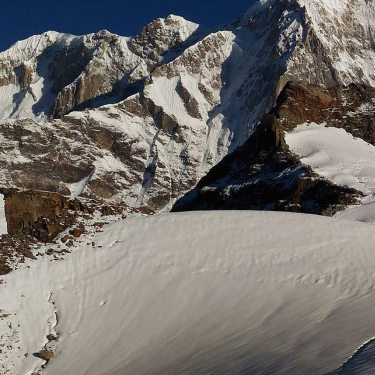
Nepal, known for its towering Himalayan peaks, also offers fantastic rock climbing opportunities. The country's diverse landscape is dotted with granite cliffs, limestone walls, and bouldering spots, making it an appealing destination for rock climbers of all levels. Whether you're a beginner looking to try out this exhilarating sport or an experienced climber seeking new challenges, Nepal has something to offer. Here are some key details about rock climbing in Nepal:
Rock Climbing Destinations:
Nepal boasts several popular rock climbing destinations spread across different regions. Some of the notable areas include:
Nagarjun Forest Reserve: Located just a few kilometers from Kathmandu, Nagarjun offers convenient access to climbing routes suitable for beginners and intermediate climbers. The crags here provide a variety of climbing experiences, from slabs and cracks to overhangs.
Hattiban: Situated on the outskirts of Kathmandu, Hattiban is another well-known rock climbing spot. It offers a range of climbing routes on limestone cliffs, providing challenges for climbers of various skill levels.
Thame: In the Everest region, Thame offers excellent rock climbing opportunities with its granite walls. The village also serves as a gateway to the Gokyo Valley and Everest Base Camp, making it an ideal combination of trekking and climbing adventures.
Pokhara: The lakeside city of Pokhara is a popular destination for rock climbing in Nepal. The surrounding hills and cliffs, including Sarangkot and Shanti Stupa, offer diverse climbing routes with stunning views of the Annapurna and Dhaulagiri mountain ranges.
Types of Climbing:
Nepal offers a wide range of rock climbing experiences, catering to climbers with different preferences and skill levels. Some common types of rock climbing in Nepal include:
Sport Climbing: Sport climbing involves climbing pre-bolted routes using fixed anchors. Nepal has several sport climbing areas, particularly around Kathmandu and Pokhara, where climbers can enjoy scaling walls and challenging themselves on well-equipped routes.
Traditional Climbing: Traditional climbing, also known as trad climbing, involves placing protective gear (cams, nuts, etc.) in cracks and crevices as the climber ascends. While not as prevalent as sport climbing in Nepal, there are some areas where trad climbing enthusiasts can find suitable routes.
Bouldering: Nepal has various bouldering spots, particularly around Kathmandu and the surrounding areas. Bouldering involves climbing shorter walls or boulders without ropes, relying on technique, strength, and problem-solving skills. It's a great option for climbers looking for a more dynamic and low-risk form of climbing.
Climbing Grades and Difficulty:
Rock climbing routes in Nepal are typically graded using the French grading system, which assesses the difficulty of the climb. The grading takes into account factors such as the technical aspects of the route, the steepness of the wall, the quality of holds, and the overall physical demands. The grading system starts from 5a (easier) and progresses up to 9c+ (extremely difficult).
Nepal offers climbing routes suitable for all skill levels, from beginners to advanced climbers. There are numerous routes graded at lower levels, providing an excellent opportunity for newcomers to learn and practice rock climbing techniques in a beautiful and adventurous setting.
Safety and Guides:
Safety is paramount in rock climbing, and it is advisable to climb with experienced guides or instructors, particularly if you're new to the sport or unfamiliar with the local climbing areas. Professional climbing guides can provide instruction, equipment, and guidance, ensuring a safe and enjoyable climbing experience.
There are numerous climbing schools and adventure companies in Nepal that offer rock climbing courses, guided trips, and equipment rental services. These organizations adhere to safety standards and have experienced instructors who can teach climbing techniques, safety protocols, and provide guidance throughout the climb.
Best Time for Rock Climbing:
The best time for rock climbing in Nepal depends on the specific location and altitude. Generally, the autumn (September to November) and spring (March to May) seasons provide the most favorable weather conditions for climbing. The weather during these seasons is generally stable, with clear skies and moderate temperatures, creating ideal conditions for rock climbing.
It's important to note that weather conditions can vary, especially in the higher altitudes, and it's crucial to check local forecasts and be prepared for any changes or unexpected weather patterns.
Rock climbing in Nepal offers a thrilling and challenging adventure amidst breathtaking natural landscapes. Whether you're looking for a day of climbing near Kathmandu or a multi-day climbing trip in the mountains, Nepal's diverse rock climbing destinations cater to climbers of all levels, providing an unforgettable experience in one of the world's most beautiful settings.

Feel free to inquire with me, and I will craft a customized holiday experience for you! You're in for incredible adventures and the creation of unforgettable memories!
Discover incredible offers for your upcoming adventure by subscribing to our newsletter with the latest travel tips and updates.
